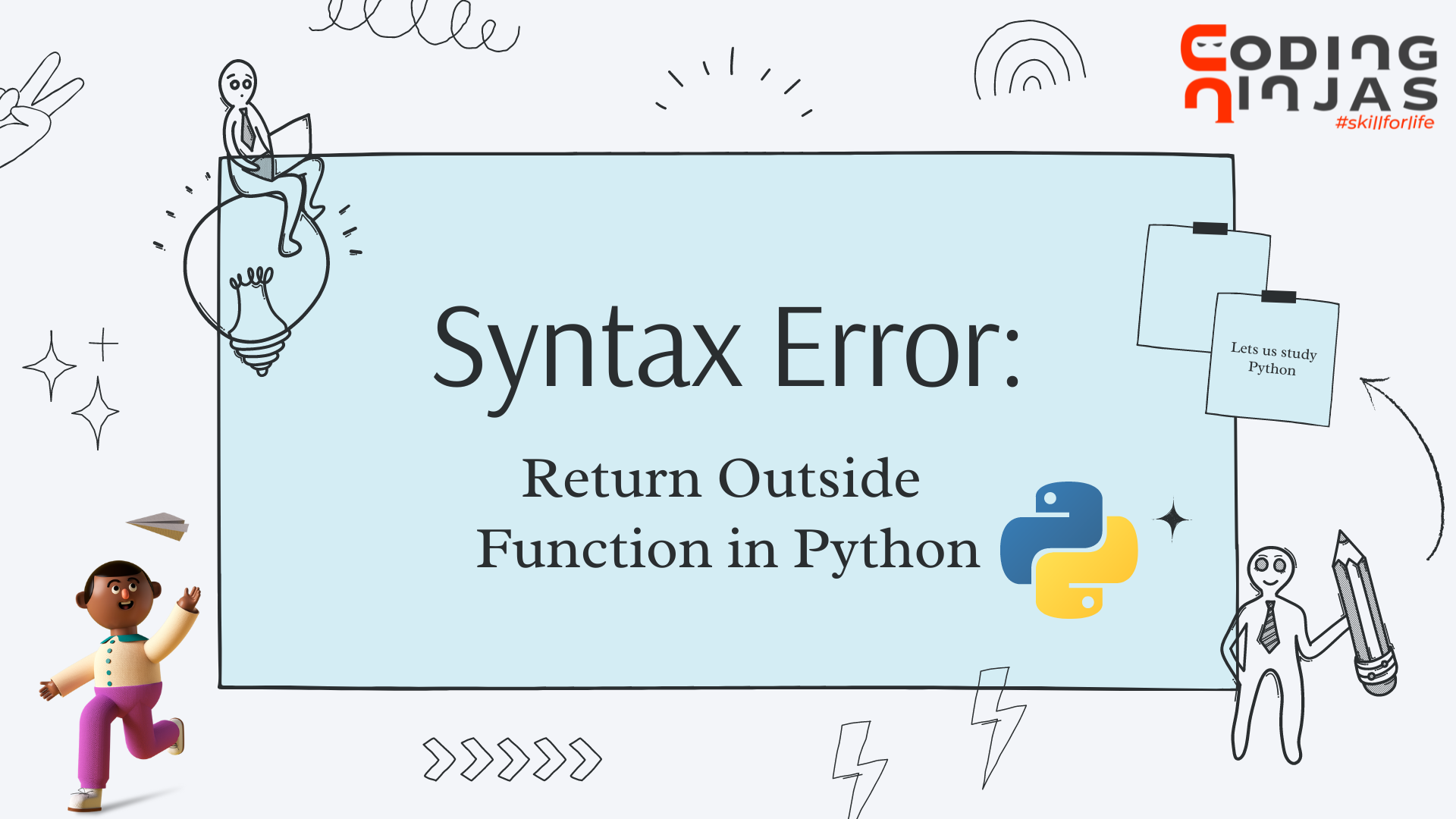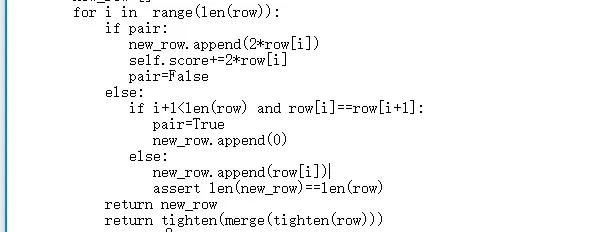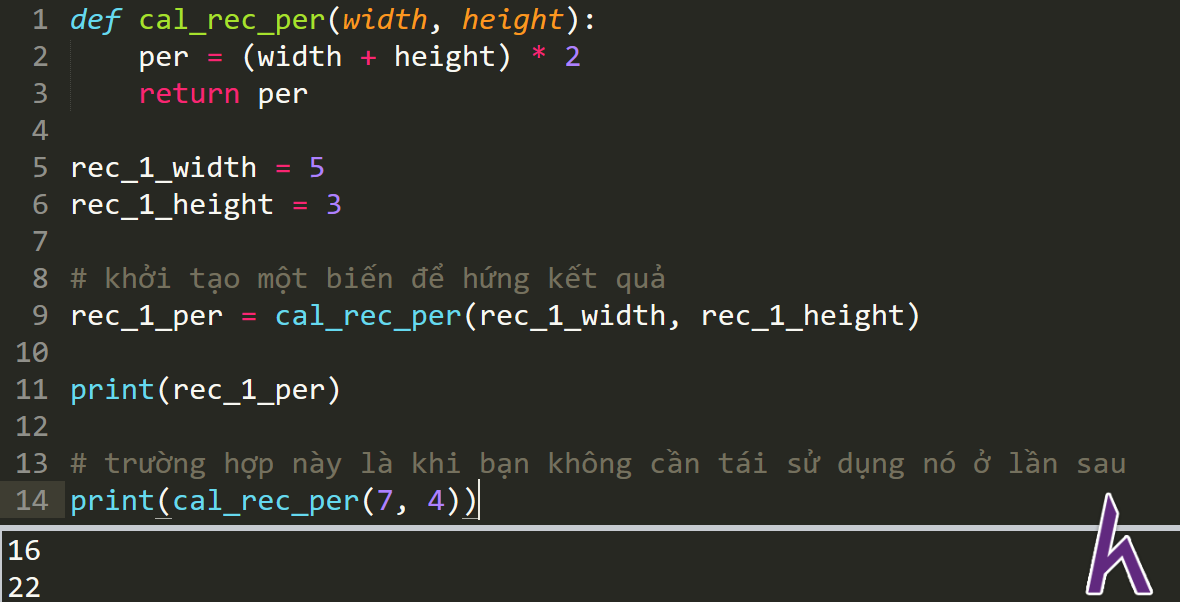Return Outside Function Python
Functions are an integral part of programming as they allow us to organize code into reusable blocks and perform specific tasks. In Python, a function is a named sequence of statements that takes in input arguments, processes them, and returns output values. The concept of returning values from a function adds versatility and flexibility to our code. This article explores the concept of returning values from functions in Python, including various techniques and best practices.
1. Understanding the Concept of a Function in Python
A function in Python is defined using the `def` keyword followed by the function name, parentheses for passing arguments, a colon, and an indented block of code. Functions can be called multiple times, making code more readable and maintainable. However, the true power of functions lies in their ability to return values.
2. Advantages of Returning Values from a Function
Returning values from a function enables us to obtain results and use them in other parts of the program. It encapsulates the logic within the function, making code modular and easier to test. By returning values, functions can be used in different contexts, providing the desired outcome based on inputs.
3. How to Return a Single Value from a Function
To return a single value from a function, we use the `return` statement followed by the desired value. The `return` statement terminates the function’s execution and passes the control back to the caller. For example:
“`
def add_numbers(a, b):
return a + b
result = add_numbers(3, 4)
print(result) # Output: 7
“`
4. Returning Multiple Values from a Function Using Tuples
Sometimes, a function needs to return multiple values. One way to achieve this is by using tuples. Tuples are immutable sequences and can hold multiple values. By returning a tuple, we can effectively return multiple values from a function. For example:
“`
def divide_numbers(a, b):
div = a / b
return (div, a % b)
quotient, remainder = divide_numbers(10, 3)
print(quotient, remainder) # Output: 3.3333333333333335 1
“`
5. Using Dictionaries to Return Multiple Values from a Function
Another way to return multiple values from a function is by using dictionaries. Dictionaries allow us to associate values with keys, providing a more descriptive way of returning multiple results. By returning a dictionary, we can easily access the values using their respective keys. For example:
“`
def get_person_details():
return {“name”: “John”, “age”: 25, “occupation”: “Engineer”}
person = get_person_details()
print(person[“name”], person[“age”], person[“occupation”]) # Output: John 25 Engineer
“`
6. Returning a List from a Function in Python
Apart from tuples and dictionaries, a function can also return a list. Lists in Python are dynamic and can hold multiple values of different types. Returning a list allows us to manipulate and iterate over the results easily. For example:
“`
def get_even_numbers(limit):
numbers = []
for i in range(limit):
if i % 2 == 0:
numbers.append(i)
return numbers
even_nums = get_even_numbers(10)
print(even_nums) # Output: [0, 2, 4, 6, 8]
“`
7. Returning a Function from Another Function
In Python, functions are first-class objects, which means they can be assigned to variables and passed as arguments to other functions. This also allows us to return a function from another function. Returning a function can be handy in cases where the behavior or functionality needs to be customized based on certain conditions or requirements.
8. Best Practices for Returning Values from Functions
When returning values from functions, it is essential to adhere to best practices for improved code readability and maintainability. Some of the best practices include:
– Clearly define the purpose of the function and the expected return type.
– Use meaningful variable names for the return values, enhancing code understanding.
– Consider packaging related return values using tuples or dictionaries for better organization and readability.
– Handle potential error scenarios and return appropriate error codes or messages.
– Avoid modifying the state of objects outside of the function while returning values.
9. Error Handling When Returning Values from Functions
Error handling is crucial when returning values from functions to ensure smooth program execution. In case of errors, functions can raise exceptions using the `raise` keyword, enabling the caller to handle the exception appropriately. Additionally, validating inputs and implementing defensive programming techniques can help prevent errors while returning values.
10. Practical Examples of Returning Values from Functions in Python
Now let’s explore practical examples of returning values from functions in Python, covering some common scenarios:
– Return Outside Function Python for Loop: Returning values from a loop inside a function allows us to accumulate and process data iteratively, providing a comprehensive result.
– Lỗi ‘return’ Outside Function: This error occurs when the `return` statement is improperly placed outside the function’s block, leading to a syntax error.
– Return Python Loop: Return statements within loops allow us to terminate the loop prematurely and return values based on certain conditions.
– Return Can Be Used Only Within a Function, Pylance: This error occurs when the `return` statement is used outside the scope of a function, highlighting a syntax violation.
– A ‘return’ Statement Can Only Be Used Within a Function Body JavaScript: Similar to the previous error, this occurs when the `return` statement is encountered outside a function in JavaScript.
– Parsing Error ‘return’ Outside of Function: This error suggests that the `return` statement is not properly placed within the function’s body, leading to a parsing error.
– Return Python Code/Return Outside Function Python: In both cases, the articles or code fragments are likely referring to the specific issue of returning values outside the scope of a function, emphasizing the need for correct positioning.
Returning values outside of functions undermines the encapsulation and modularity provided by functions, leading to potential errors and code structuring issues. Therefore, it is vital to ensure proper usage of the `return` statement within functions.
In conclusion, returning values from functions in Python enhances code flexibility and modularity. By understanding and utilizing the different techniques and best practices discussed, we can write efficient and robust code that leverages the power of functions. Whether returning single values, multiple values using tuples or dictionaries, or even returning functions, Python offers the necessary tools to accomplish these tasks effectively.
Return’ Outside Function In Very Simple Program (2 Answers)
Keywords searched by users: return outside function python Return outside function python for loop, Lỗi return’ outside function, Return Python, Python return loop, Return can be used only within a functionpylance, A ‘return statement can only be used within a function body JavaScript, Parsing error return’ outside of function, Return python code
Categories: Top 93 Return Outside Function Python
See more here: nhanvietluanvan.com
Return Outside Function Python For Loop
Introduction:
In Python, the for loop is a fundamental construct that allows us to iterate over sequences, such as strings, lists, or tuples, and perform specific actions. Within this loop, we can encounter scenarios where we wish to break out of the loop prematurely and return a particular value. In this article, we will delve into how to return outside a function within a for loop in Python, discussing its significance, applicable use cases, and common pitfalls.
Returning outside a function within a for loop:
By design, returning a value outside of a function is not directly possible. However, there are ways to achieve a similar effect if you wish to exit a loop and return a desired value. One approach is to utilize a nested if statement within the for loop to check certain conditions and return the value when required.
Example:
“`python
def find_value(sequence, desired_value):
for item in sequence:
if item == desired_value:
return item
return None
“`
In this example, we define a function `find_value` that takes a sequence and a desired value as input parameters. Using a for loop, we iterate over each item in the sequence. If an item matches the desired value, we return it. Otherwise, once the loop concludes, we return `None` to indicate that the desired value was not found.
Use cases:
1. Searching for an element: The ability to return outside a function within a for loop is particularly useful when searching for a specific element within a sequence. It allows us to stop the iteration early and return the desired result as soon as it’s found, saving time and resources.
2. Early termination: Another common use case is when we need to stop performing a lengthy loop iteration once a specific condition is met. By utilizing a return statement within the loop, we can exit immediately.
3. Performance optimization: In certain scenarios, it may be beneficial to exit a loop prematurely to optimize code execution. By utilizing returns outside functions within a loop, unnecessary iterations can be avoided, improving overall performance.
Common pitfalls and considerations:
1. Multiple returns: Care should be taken when using multiple return statements within a loop, especially when the loop spans a considerable amount of code. Returning from multiple locations can make the code harder to understand and maintain.
2. Loop control flow: Returning outside a function within a for loop alters the expected control flow. Consequently, it is essential to ensure that the loop termination condition is well-defined, and exiting the loop early does not introduce any unforeseen issues.
3. Code readability: While returning outside a function can help achieve desired outcomes, it is critical to maintain code readability and adhere to best practices. Proper indentation, clear variable names, and meaningful comments should be employed to ensure the code remains comprehensible.
FAQs:
1. Can we use a return statement outside a loop in Python?
No, a return statement outside a function is not possible. Returns are associated with functions and are used to provide an output value to the caller of the function.
2. What happens if a return statement is encountered within nested loops?
If a return statement is encountered within a nested loop, it will only exit the innermost loop and continue executing the outer loops until they are complete.
3. Is it possible to return a value and continue the loop execution?
No, when a return statement is encountered within a loop, the loop will terminate immediately, and the control will be passed back to the caller of the function.
4. How can we handle exceptions while using return statements within a loop?
To handle exceptions within a loop, it is recommended to encapsulate the loop in a try-except block. By doing so, exceptions can be caught, logged, or handled appropriately before returning from the loop.
Conclusion:
Being able to return outside a function within a for loop in Python can provide valuable flexibility in certain programming scenarios. By utilizing return statements strategically, we can efficiently search for specific elements within sequences, optimize performance, and control the flow of our code. However, it is essential to exercise caution, maintain code readability, and understand the potential pitfalls associated with this technique.
Lỗi Return’ Outside Function
Causes of the “return’ outside function” error:
1. Scope issues: The most common cause of this error is a misplaced or redundant return statement. In many programming languages, a return statement is only allowed within the body of a function. If a return statement is found outside any function, the compiler or interpreter will raise an error.
2. Syntax errors: Another possible cause of this error is a syntax mistake in the code. For example, a missing bracket or misplaced punctuation can result in an unexpected end of a function, making subsequent return statements invalid.
3. Mismatched function definitions and declarations: In some cases, this error may occur due to a mismatch between the definition and declaration of a function. If a return statement is placed outside a function definition but within its declaration, this error can be triggered.
Importance of addressing the “return’ outside function” error:
1. Code correctness: Resolving this error is crucial for ensuring the correctness of the code. A return statement outside a function can lead to unpredictable behavior, causing the program to produce incorrect outputs or even crash.
2. Code maintainability: Identifying and addressing this error improves the maintainability of the code. By following proper coding standards, developers can easily understand and modify the code in the future.
Resolving the “return’ outside function” error:
To resolve this error, it is essential to carefully review the code and apply the following solutions:
1. Check function definitions and declarations: Ensure that all function definitions match their declarations. Make sure that return statements are placed appropriately within the function’s body and not outside of it.
2. Verify the scope of return statements: Double-check the location of all return statements in the code. They should only be present inside the scope of a function and not in the global scope or outside any function.
3. Correct syntax errors: If syntax errors are suspected, carefully review the code for any missing or misplaced punctuations, brackets, or braces. Correcting these errors can prevent the “return’ outside function” issue.
4. Comment out problematic code: If you are unable to identify the exact source of the error, temporarily comment out sections of the code to isolate the problem area. By narrowing down the code block, you can pinpoint the location of the misplaced return statement more efficiently.
Frequently Asked Questions (FAQs):
Q1: Can the “return’ outside function” error occur in all programming languages?
A1: No, this error is only applicable to programming languages that use functions and have strict scoping rules. Examples include C, C++, Java, Python, and JavaScript.
Q2: What other similar errors can occur in programming?
A2: Other common errors include “unexpected token,” “undeclared variable,” and “syntax error.” These errors are typically caused by incorrect language syntax, variable scope issues, or missing dependencies.
Q3: Is it possible to have multiple return statements within a single function?
A3: Yes, it is entirely acceptable and common to have multiple return statements in a function. However, only one of these return statements should be executed when the function is called.
Q4: Can the “return’ outside function” error occur in object-oriented programming (OOP) languages?
A4: Yes, this error can occur in OOP languages if return statements are placed outside the proper context, such as a method definition or a class declaration. Proper scoping and syntax adherence are essential to avoid this error.
Q5: How can I prevent this error from occurring again in the future?
A5: Adhering to best coding practices, careful code review, and utilizing an integrated development environment (IDE) with syntax highlighting and error checking capabilities can greatly help in preventing this error.
In conclusion, the “return’ outside function” error is a common issue faced by programmers when writing code in languages that support functions. It is caused by misplaced return statements, syntax errors, or mismatched function definitions. Understanding the significance of addressing this error and following the suggested resolutions will lead to code correctness and improved maintainability. By being aware of the potential causes and solutions for this error, programmers can develop more robust and error-free code.
Return Python
In Python, the return statement is followed by an expression or a variable that holds the value which needs to be passed back to the caller. When the return statement is encountered, the flow of execution within the function is terminated, and the value is sent back to the caller. This enables functions to produce results that can be used by other parts of a program.
Let’s take a look at a simple example to understand the usage of the return statement:
“`python
def add_numbers(a, b):
return a + b
result = add_numbers(5, 7)
print(“The sum of the numbers is:”, result)
“`
In the above code, the function `add_numbers` takes two arguments, `a` and `b`, and adds them together. The result is then returned using the return statement. The returned value is assigned to the variable `result`, which is then printed to the console. In this case, the output will be `The sum of the numbers is: 12`.
Return statements can also be used without any expression. In such cases, the function terminates immediately and returns `None` to the caller. Let’s consider the following example:
“`python
def greet():
print(“Hello, welcome to Python!”)
result = greet()
print(result) # Output: None
“`
In this case, when the function `greet` is called, it prints a welcome message but does not return any value. Therefore, the variable `result` holds the value `None`, which is then printed to the console.
The usage of return statements is not only limited to returning a single value. It can also be used to return multiple values by returning them as a comma-separated sequence or a collection like a list or a dictionary. This can be particularly useful when we want to return multiple results from a function. Let’s consider the following example:
“`python
def calculate_stats(numbers):
total = sum(numbers)
average = total / len(numbers)
return total, average
numbers = [10, 15, 20, 25, 30]
total_sum, average_value = calculate_stats(numbers)
print(“Total sum:”, total_sum)
print(“Average value:”, average_value)
“`
In this case, the `calculate_stats` function takes a list of numbers as input and calculates the total sum and average value. Both values are returned using a comma-separated sequence. The returned values are then assigned to two variables `total_sum` and `average_value`, which are then printed to the console.
Now, let’s address some common FAQs related to the return statement in Python:
### FAQs
**Q: What happens if a return statement is not included in a function?**
A: If a return statement is not included in a function, the function will automatically return `None` to the caller.
**Q: Can a function return multiple values without explicitly using a return statement?**
A: No, a function in Python can only return a single value. To return multiple values, they must be explicitly returned as a sequence or a collection.
**Q: Can a function return different types of values?**
A: Yes, a function in Python can return values of different types. The type of value returned by a function depends on the expression or variable used with the return statement.
**Q: Can I use a return statement outside of a function?**
A: No, a return statement can only be used inside a function. It is used to end the flow of execution within the function and return a value back to the caller.
**Q: Can I use the return statement in a loop or conditional statement?**
A: Yes, the return statement can be used inside a loop or conditional statement. When the return statement is encountered, the function terminates, and the value is returned back to the caller, regardless of the loop or conditional statement.
In conclusion, the return statement is a crucial component of Python functions, allowing us to provide results to the caller. It terminates the execution of a function and passes back a value. Whether it is a single value or multiple values, the return statement enables functions to be more versatile and reusable. Understanding how to use the return statement effectively is essential in writing efficient and modular Python code.
Images related to the topic return outside function python

Found 29 images related to return outside function python theme




![Syntaxerror 'return' Outside Function Python Error [Causes & How To Fix] - Python Guides Syntaxerror 'Return' Outside Function Python Error [Causes & How To Fix] - Python Guides](https://i0.wp.com/pythonguides.com/wp-content/uploads/2023/06/syntaxerror-return-outside-function.png)











![Global Variable in Python With Examples [Updated] | Simplilearn Global Variable In Python With Examples [Updated] | Simplilearn](https://www.simplilearn.com/ice9/free_resources_article_thumb/GlobalVariableinPython_11.png)





![SyntaxError: 'break' outside loop in Python [Solved] | bobbyhadz Syntaxerror: 'Break' Outside Loop In Python [Solved] | Bobbyhadz](https://bobbyhadz.com/images/blog/python-syntaxerror-break-outside-loop/using-break-outside-loop.webp)

















![Global Variable in Python With Examples [Updated] | Simplilearn Global Variable In Python With Examples [Updated] | Simplilearn](https://www.simplilearn.com/ice9/free_resources_article_thumb/GlobalVariableinPython_1.png)
![SyntaxError: 'break' outside loop in Python [Solved] | bobbyhadz Syntaxerror: 'Break' Outside Loop In Python [Solved] | Bobbyhadz](https://bobbyhadz.com/images/blog/python-syntaxerror-break-outside-loop/banner.webp)




.jpg)
Article link: return outside function python.
Learn more about the topic return outside function python.
- Python SyntaxError: ‘return’ outside function Solution
- SyntaxError: ‘Return’ Outside Function in Python – STechies
- Return Outside Function error in Python – Initial Commit
- Use of ‘return’ or ‘yield’ outside a function – CodeQL – GitHub
- How does return() in Python work? | Flexiple Tutorials
- Return Outside Function error in Python – Initial Commit
- How to Fix SyntaxError: ‘return’ outside function … – AppDividend
- Syntaxerror ‘return’ Outside Function Python Error [Causes …
- Return outside function error in Python – Stack Overflow
- [Solved] SyntaxError: ‘return’ outside function in Python
- Python ‘Return Outside Function’ Error – Javatpoint
- How to Fix – SyntaxError: return outside function
See more: https://nhanvietluanvan.com/luat-hoc